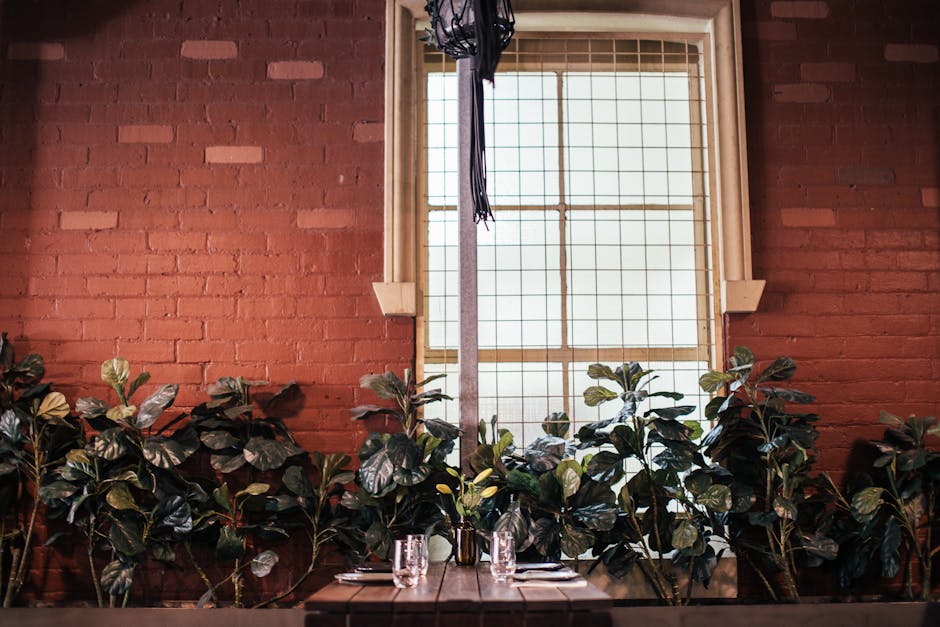Indoor Decor Inspired by Nature: Bringing the Outside In with Earthy Design Elements
Introduction
In today’s fast-paced world, finding solace and tranquility within our homes is more important than ever. One of the most effective ways to achieve this is by embracing the principles of biophilic design and bringing the beauty of nature indoors. This article explores how you can transform your living spaces into serene havens with earthy design elements, creating a harmonious connection between the indoors and the outdoors.
Incorporating Natural Materials
Wood: The Foundation of Earthy Design
Wood is a versatile and essential material for creating a nature-inspired interior. It adds warmth, texture, and a sense of groundedness to any space.
- Flooring: Opt for hardwood floors or engineered wood with a natural finish.
- Furniture: Choose furniture made from solid wood or reclaimed wood for a rustic feel.
- Accent Pieces: Incorporate wooden bowls, trays, and sculptures to add organic touches.
Stone: Adding Texture and Depth
Stone elements introduce a sense of permanence and raw beauty to your interior design.
- Fireplace Surround: A stone fireplace creates a focal point and adds a natural element.
- Accent Walls: Consider using stone veneer or natural stone tiles on an accent wall.
- Countertops: Granite, marble, and soapstone countertops bring natural patterns and textures to kitchens and bathrooms.
Natural Fabrics: Comfort and Sustainability
Choosing natural fabrics enhances the comfort and eco-friendliness of your space.
- Linen: Use linen for curtains, bedding, and upholstery for a breathable and relaxed feel.
- Cotton: Opt for organic cotton for bedding, towels, and rugs to minimize your environmental impact.
- Wool: Wool rugs and blankets add warmth, texture, and a touch of luxury.
Embracing Natural Colors and Lighting
Earthy Color Palettes: Grounding and Calming
Earthy color palettes mimic the tones found in nature, creating a calming and grounding atmosphere.
- Greens: Shades of green, from deep forest green to soft sage, evoke feelings of tranquility and connection to nature.
- Browns: Brown tones, ranging from rich chocolate to light beige, provide a sense of stability and warmth.
- Beiges and Neutrals: Neutral colors like beige, cream, and off-white create a blank canvas that allows natural textures and materials to shine.
Natural Light: Maximizing Sunlight
Maximize natural light to create a bright and airy space that enhances your well-being.
- Window Treatments: Use sheer curtains or blinds to filter sunlight and maintain privacy.
- Mirrors: Strategically place mirrors to reflect light and brighten dark corners.
- Light-Colored Walls: Paint walls in light colors to reflect light and create a more spacious feel.
Artificial Lighting: Mimicking Natural Tones
Supplement natural light with artificial lighting that mimics the warmth and softness of sunlight.
- Warm Bulbs: Use warm LED bulbs to create a cozy and inviting atmosphere.
- Layered Lighting: Incorporate a combination of ambient, task, and accent lighting to create depth and dimension.
- Natural Materials for Lamps: Choose lamps with bases made from wood, ceramic, or rattan for a natural touch.
Incorporating Plants and Greenery
Houseplants: Bringing Life Indoors
Houseplants are essential for creating a nature-inspired interior. They purify the air, add visual interest, and promote a sense of well-being.
- Low-Maintenance Options: Consider snake plants, ZZ plants, and succulents for easy care.
- Air-Purifying Plants: Choose plants like spider plants, peace lilies, and pothos to improve air quality.
- Varied Textures and Colors: Select plants with different leaf shapes, sizes, and colors to add visual interest.
Vertical Gardens: Green Walls
Vertical gardens are a stunning way to bring greenery into your home, especially in limited spaces.
- Living Walls: Install a professionally designed living wall for a dramatic statement.
- DIY Options: Create your own vertical garden using modular planters or repurposed materials.
- Herb Gardens: Grow herbs indoors for fresh ingredients and a fragrant touch.
Natural Elements: Bringing the Outdoors In
Beyond plants, consider incorporating other natural elements to enhance the connection to the outdoors.
- Stones and Pebbles: Display stones and pebbles in decorative bowls or trays.
- Seashells: Incorporate seashells into your decor for a coastal vibe.
- Branches and Twigs: Use branches and twigs in vases or as decorative accents.
Conclusion
By embracing earthy design elements and incorporating natural materials, colors, lighting, and plants, you can transform your home into a tranquil oasis that reflects the beauty and serenity of the natural world. Creating a nature-inspired interior not only enhances the aesthetic appeal of your living spaces but also promotes a sense of well-being, reducing stress and fostering a deeper connection with the environment.














Post Comment